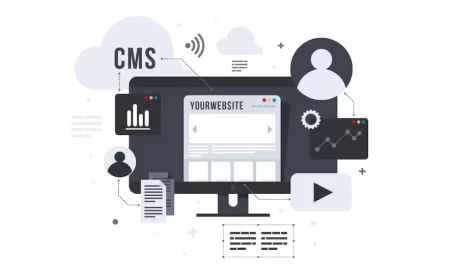Webflow, Inc. is an American technology company based in San Francisco, California, renowned for its innovative software-as-a-service (SaaS) platform that empowers users to design, build, and launch responsive websites without writing traditional code. Often categorized as a “no-code” or “visual development” platform, Webflow bridges the gap between design and development, offering a powerful visual editor that automatically generates clean, semantic HTML, CSS, and JavaScript.
Since its inception, Webflow has gained significant traction among web designers, developers, marketers, and businesses of all sizes, from individual freelancers and startups to large enterprises. It provides an all-in-one solution that includes design tools, a robust Content Management System (CMS), e-commerce capabilities, hosting, and SEO features, making it a comprehensive platform for creating and managing a modern web presence.
Company Overview
- Name: Webflow, Inc.
- Headquarters: San Francisco, California, United United States
- Founded: 2012 (officially launched in 2013)
- Industry: Multimedia and Design Software, SaaS, Web Development Platform
- Status: Private
- Users: Over 3.5 million (as of July 2025 data)
- Team Members: 600+ (as of July 2025 data)
- Total Funding: $335M (as of July 2025 data)
- Website:
https://webflow.com/
Founding Story and History
Webflow was founded by three visionaries:
- Vlad Magdalin (Co-founder & Chief Innovation Officer, formerly CEO)
- Sergie Magdalin (Co-founder & Design Fellow)
- Bryant Chou (Co-founder & Chief Architect)
The idea for Webflow originated from Vlad Magdalin’s frustration with the disconnect between design and development in traditional web building. He envisioned a tool that would allow designers to create visually while generating production-ready code in the background. After several failed attempts and even accumulating credit card debt, the team finally gained significant traction in March 2013 following a viral post on Hacker News, which led to 20,000 sign-ups.
Webflow then joined the prestigious Y Combinator startup accelerator in the summer of 2013. The company has since raised substantial venture funding from notable investors including Khosla Ventures, Y Combinator, Accel, CapitalG, and Silversmith Capital Partners.
Key Milestones:
- 2012: Company founded.
- 2013: Launched and graduated from Y Combinator.
- 2019: Raised a $72 million Series A funding round.
- January 2021: Raised $140 million in a Series B round, pushing its valuation to $2.1 billion.
- April 2024: Acquired Intellimize, an AI-driven personalization platform, expanding its offerings beyond visual development to become an integrated Website Experience Platform.
- October 2024: Acquired GreenSock, the company behind the popular JavaScript animation library GSAP, further enhancing its animation capabilities.
- June 2025: Linda Tong was promoted to CEO, with Vlad Magdalin transitioning to Chief Innovation Officer.
Products and Services
Webflow offers a comprehensive suite of tools and services designed to cover the entire website lifecycle, from initial design to ongoing optimization and hosting.
1. The Webflow Designer
- Visual Development Interface: The core of Webflow, allowing users to visually design and build websites with direct control over HTML, CSS, and JavaScript properties through a drag-and-drop interface.
- Responsive Design: Tools to ensure websites automatically adapt and look great on all devices (desktop, tablet, mobile) with granular control over breakpoints.
- Interactions & Animations: Powerful built-in tools to create complex, engaging animations and interactive elements without writing custom JavaScript. This includes scroll-based animations, hover effects, and more.
- Clean Code Generation: Automatically generates clean, semantic, and production-ready HTML5, CSS3, and JavaScript code, which can also be exported.
2. Webflow CMS (Content Management System)
- Dynamic Content: A flexible CMS that allows users to define custom content structures (Collections) for blogs, portfolios, products, team members, and more.
- Content Management: Easy-to-use interface for adding, editing, and managing content items, which then dynamically populate designed templates across the site.
- API Access: Provides a REST API to programmatically add, update, or delete CMS items, enabling integrations with external databases or applications.
3. Webflow E-commerce
- Visual Store Design: Full visual control over the design and layout of product pages, shopping carts, and checkout flows.
- Product Management: Tools for managing products, variants, inventory, orders, and payments.
- Built-in Features: Includes features for discounts, shipping options, and sales tax calculation.
4. Hosting & Security
- Fast & Reliable Hosting: Integrated hosting powered by Amazon Cloudfront and Fastly, ensuring high performance and global content delivery.
- SSL Encryption: Built-in SSL certificates for secure website connections.
- Scalability: Designed to scale from small personal sites to large, high-traffic enterprise platforms.
- Backups: Automatic backups allow for one-click restoration of previous site versions.
5. Optimization & Analytics
- Webflow Analyze (Native Analytics): A built-in analytics tool providing essential insights into site performance, page views, visitors, and click data directly within the Webflow dashboard. It’s designed for simplicity and privacy.
- Webflow Optimize: Features for A/B testing and personalization to maximize conversions (enhanced by the Intellimize acquisition).
- SEO Tools: Built-in features for managing meta titles and descriptions, custom slugs, 301 redirects, and automatic sitemap generation to improve search engine visibility.
6. Integrations & Extensibility
- Apps Marketplace: Connects Webflow sites to a wide range of third-party applications for analytics, marketing, CRM, and more (e.g., HubSpot, Mailchimp, Zapier, Airtable, Memberstack).
- Custom Code Embeds: Allows users to embed custom HTML, CSS, and JavaScript directly into pages or sitewide for advanced functionality.
- Figma to Webflow Plugin: Streamlines the design-to-development workflow by converting Figma designs into clean, production-ready Webflow code.
- DevLink: Enables developers to create production-ready React components that can be used within Webflow.
7. Community & Education
- Webflow University: A comprehensive library of free video tutorials and courses covering all aspects of Webflow design and development.
- Webflow Blog: Provides articles, insights, and advice on web design, development, and industry trends.
- Community Forum: An active platform for users to ask questions, share knowledge, and connect with other Webflow enthusiasts.
- Certified Partners Program: A network of certified Webflow agencies and freelancers available for hire.
Vision and Values
Webflow’s vision is to build the world’s most powerful website experience platform. The company operates on core values and behaviors, including obsessing over customer experience, moving with heartfelt urgency, saying the hard thing with care, and making their mark. They are committed to building a diverse team and fostering an inclusive environment.
Impact and Market Position
Webflow has significantly impacted the web development industry by democratizing web creation, allowing designers and non-coders to build sophisticated websites that were once only possible with extensive coding knowledge. It competes with traditional website builders like Wix and Squarespace, as well as more developer-centric platforms like WordPress, by offering a unique blend of visual control and code quality. Its continuous innovation, strategic acquisitions, and strong community support position Webflow as a leading force in the future of web design and development.












